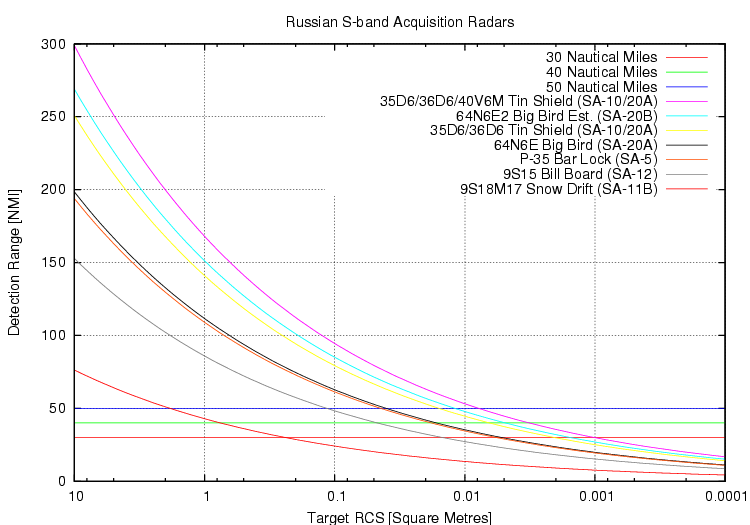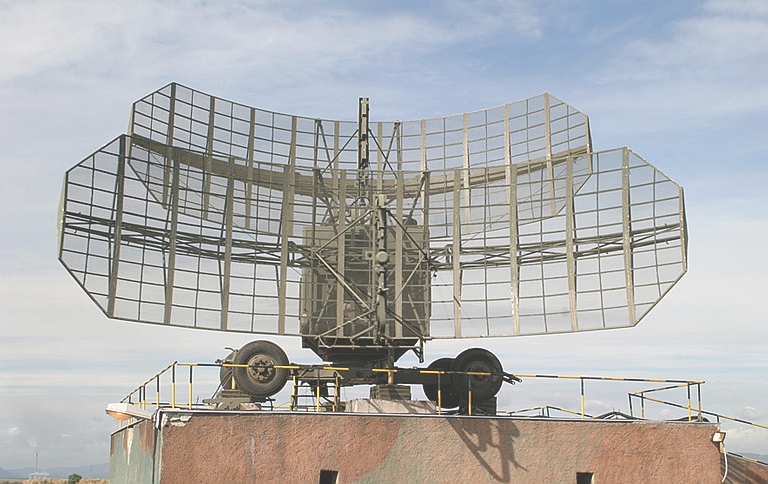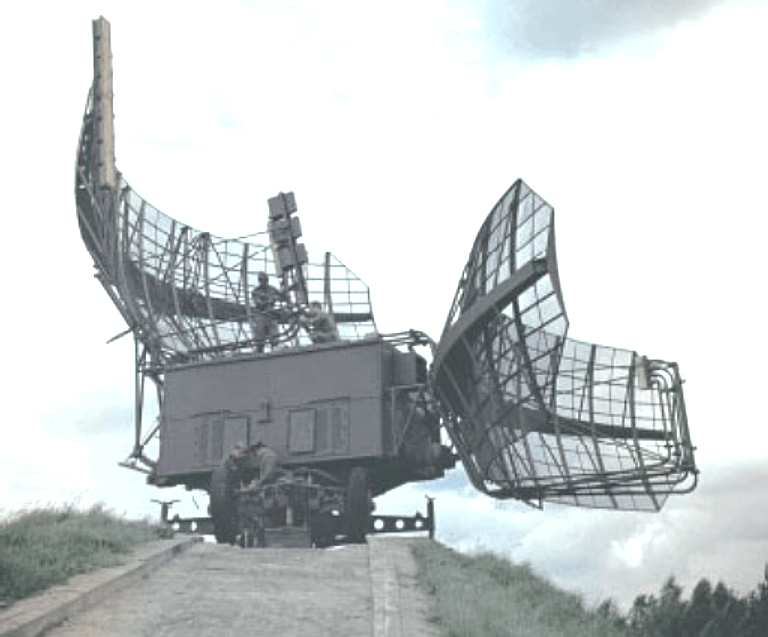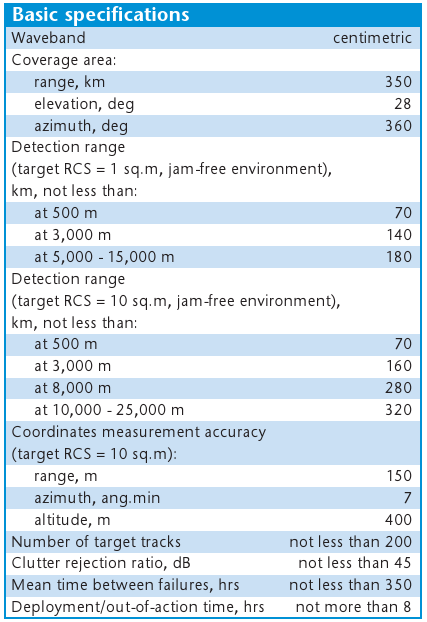|
||||||||||||||||||||||
![Home - Air Power Australia Website [Click for more ...]](APA/APA-Title-Main.png) |
||||||||||||||||||||||
![Sukhoi PAK-FA and Flanker Index Page [Click for more ...]](APA/flanker.png) |
![F-35 Joint Strike Fighter Index Page [Click for more ...]](APA/jsf.png) |
![Weapons Technology Index Page [Click for more ...]](APA/weps.png) |
![News and Media Related Material Index Page [Click for more ...]](APA/media.png) |
|||||||||||||||||||
![Surface to Air Missile Systems / Integrated Air Defence Systems Index Page [Click for more ...]](APA/sams-iads.png) |
![Ballistic Missiles and Missile Defence Page [Click for more ...]](APA/msls-bmd.png) |
![Air Power and National Military Strategy Index Page [Click for more ...]](APA/strategy.png) |
![Military Aviation Historical Topics Index Page [Click for more ...]](APA/history.png)
|
![Intelligence, Surveillance and Reconnaissance and Network Centric Warfare Index Page [Click for more ...]](APA/isr-ncw.png) |
![Information Warfare / Operations and Electronic Warfare Index Page [Click for more ...]](APA/iw.png) |
![Systems and Basic Technology Index Page [Click for more ...]](APA/technology.png) |
![Related Links Index Page [Click for more ...]](APA/links.png) |
|||||||||||||||
![Homepage of Australia's First Online Journal Covering Air Power Issues (ISSN 1832-2433) [Click for more ...]](APA/apa-analyses.png) |
||||||||||||||||||||||
| Last Updated: Mon Jan 27 11:18:09 UTC 2014 | ||||||||||||||||||||||
|
||||||||||||||||||||||
|
Search
and Acquisition Radars
(S-Band, X-band) Technical Report APA-TR-2009-0101 |
||||||||||||||||||||||||||||||||||||||||||||||||||||||||||||||
| by
Dr
Carlo Kopp, AFAIAA, SMIEEE, PEng January, 2009 Updated July, 2009 Updated April, 2012 Text, Line Art © 2008 - 2012 Carlo Kopp  |
||||||||||||||||||||||||||||||||||||||||||||||||||||||||||||||
|
||||||||||||||||||||||||||||||||||||||||||||||||||||||||||||||
|
|
||||||||||||||||||||||||||||||||||||||||||||||||||||||||||||||
P-30 Periskop /
P-35 Saturn
/ P-37 / 1L117/1L117M Bar Lock / Big Bar / Big Mesh
|
||||||||||||||||||||||||||||||||||||||||||||||||||||||||||||||
| P-37
Principal
Specifications [A] |
|
|---|---|
| Operating
Band
[Ghz] |
2.9
-
3.3 (5 channels)')"
onmouseout="UnTip()"> |
| Pulse
Repetition
Interval (PRI) [msec] |
1.3
/
2.6 |
| Pulse
Repetition
Frequency (PRF) [Hz] |
375 - 750 |
| Pulse
Duration
[usec] |
1.2 |
| Peak
Power
[MegaWatt] |
0.7 |
| Ave
Power
[kiloWatt] |
0.7 |
| Displayed
Range
[km] |
~450.0 |
| Range
Resolution
[m] |
180.0 |
| Mainlobe
Width
[°] |
2.0 |
| Sweep
Rate
[RPM] |
6 |
| Deploy/Stow Time
[min] |
~60 |
| Основные
тактико-технические
характеристики [LEMZ] |
|
| Диапазон рабочих частот | 10 см |
| Максимальная дальность, км | 350 |
| Угол обзора в вертикальной плоскости, град | 28 |
| Точность определения координат (СКО): | |
| дальности, м | 300 |
| азимута, угл. мин | 10 |
| высоты, м | 400 |
| Разрешающая способность: | |
| по дальности, м | 500 |
| по азимуту, град | 1 |
| Коэффициент подавления отражений от местных предметов, дБ | 25 |
| Темп обновления информации, с | 10 |
| Количество сопровождаемых целей | 200 |
| Потребляемая мощность, кВт | 50 |
| Условия окружающей среды: | |
| рабочий диапазон температур, °С | от -40 до +50 |
| относительная влажность, % | до 100 (в тропическом исполнении) |
| скорость ветра, м/с | до 25 без РПУ |
VNIIRT 5N59/ST-68
/
19Zh6/ST-68U / 35D6/36D6/ST-68UM Tin Shield
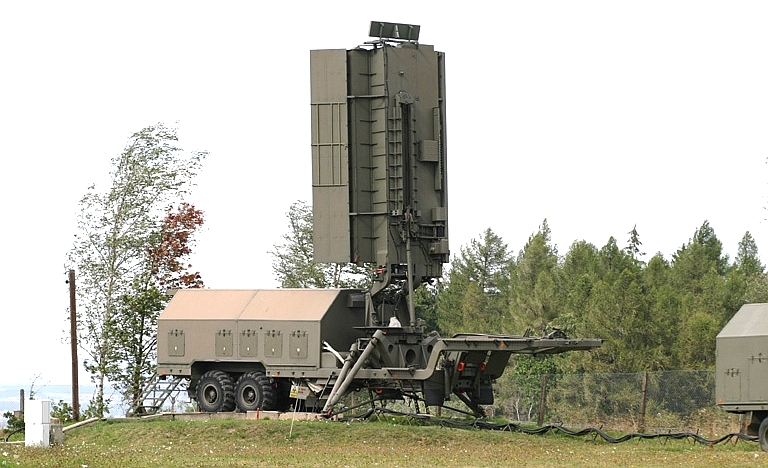
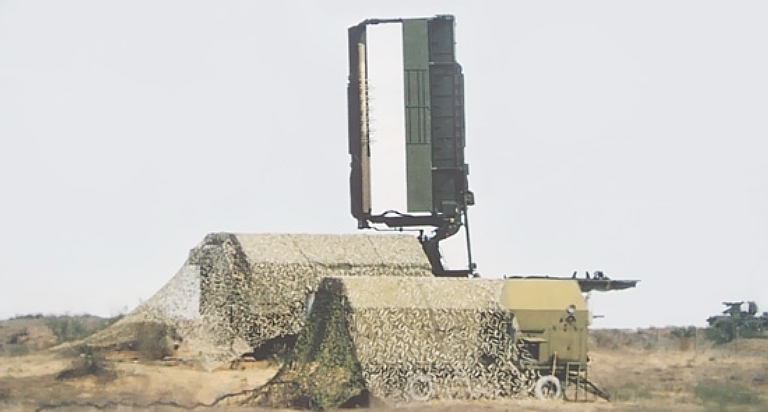
The Tin Shield family of radars is diverse and over 1,000 have been built, with many variants widely exported. While the radar is best known as the acquisition component for the S-300P/PM/PMU/PMU1 SA-10/20 Grumble/Gargoyle SAM system, it has also been widely used as a general purpose medium/high altitude search radar. The radar is most commonly seen in its basic towed configuration, but can also be mounted on the 40V6M or 40V6MD mast system. It has been largely supplanted in newer S-300P/S-400 configurations by the LEMZ 96L6E.
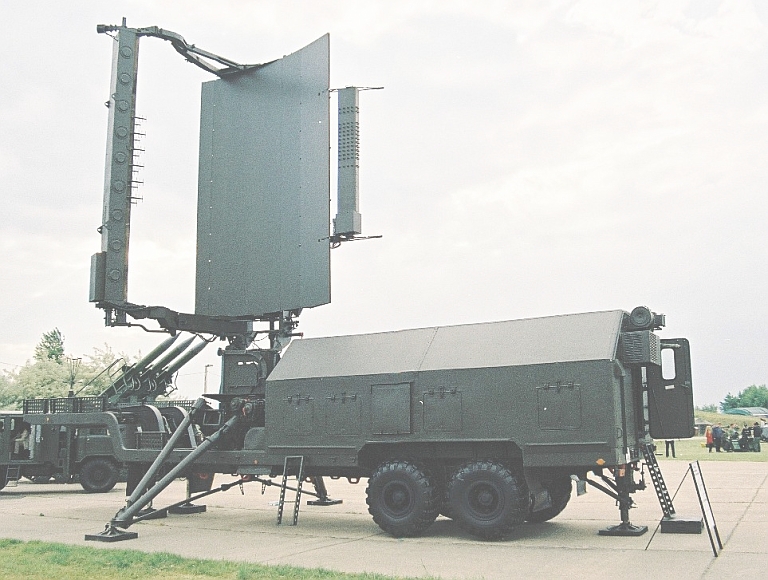

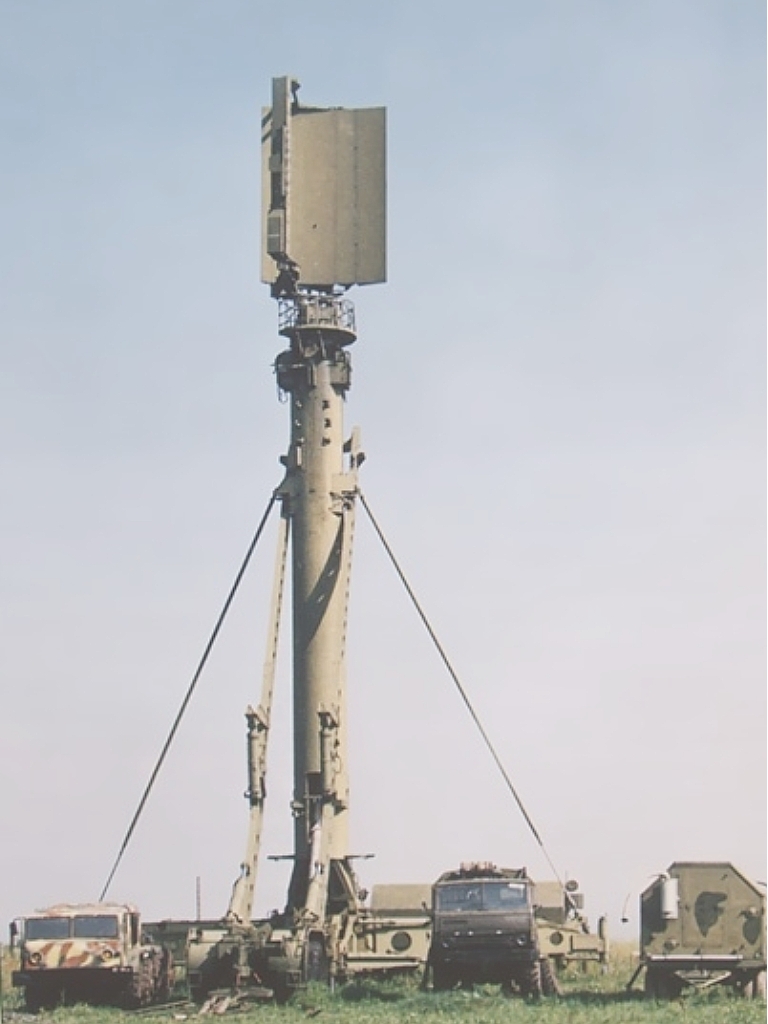
An ST-68UM Tin Shield mounted on the 40V6M mast.
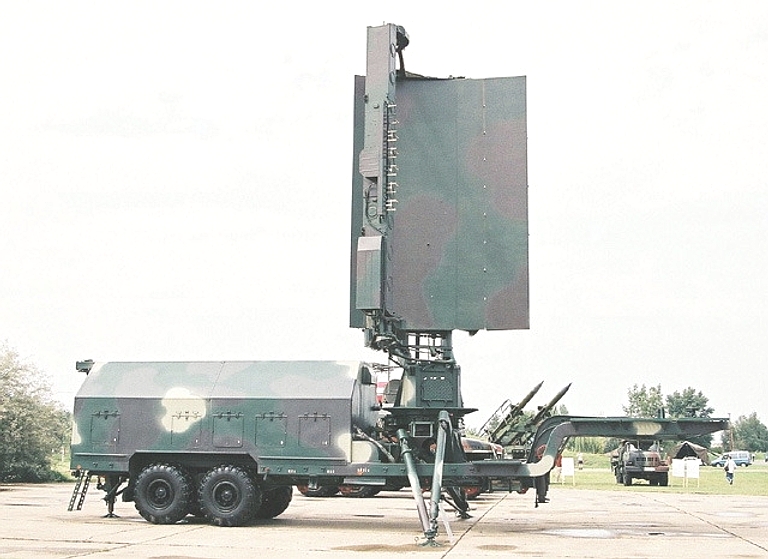
Tin Shield on display.
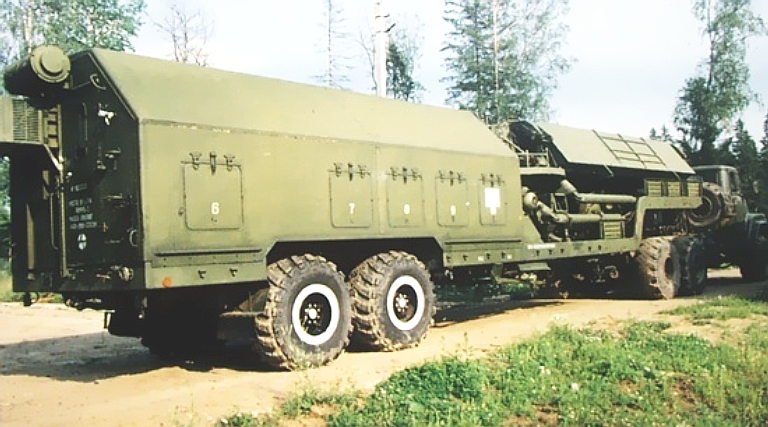
A stowed ST-68UM Tin Shield.
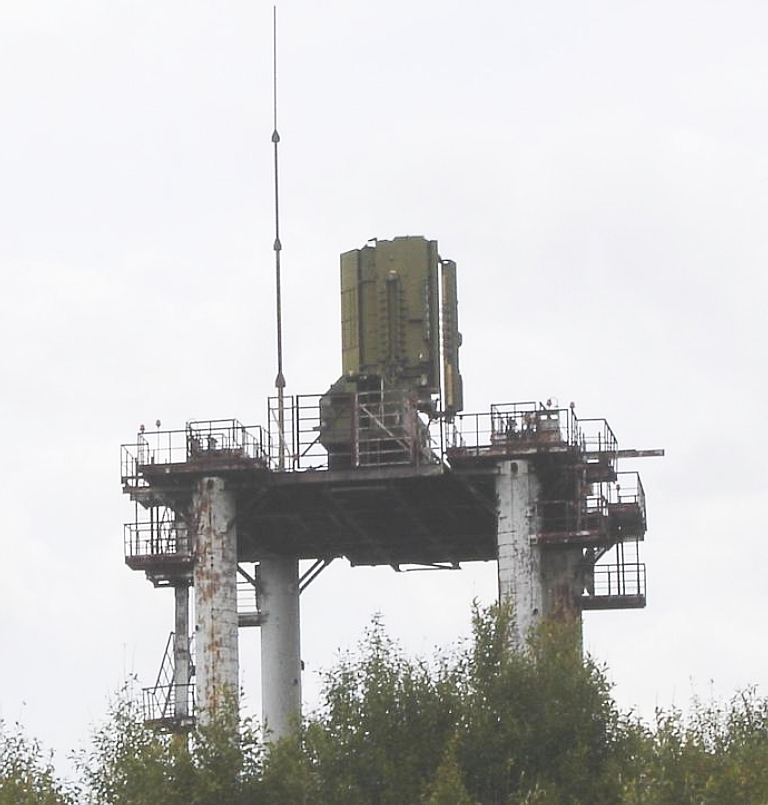
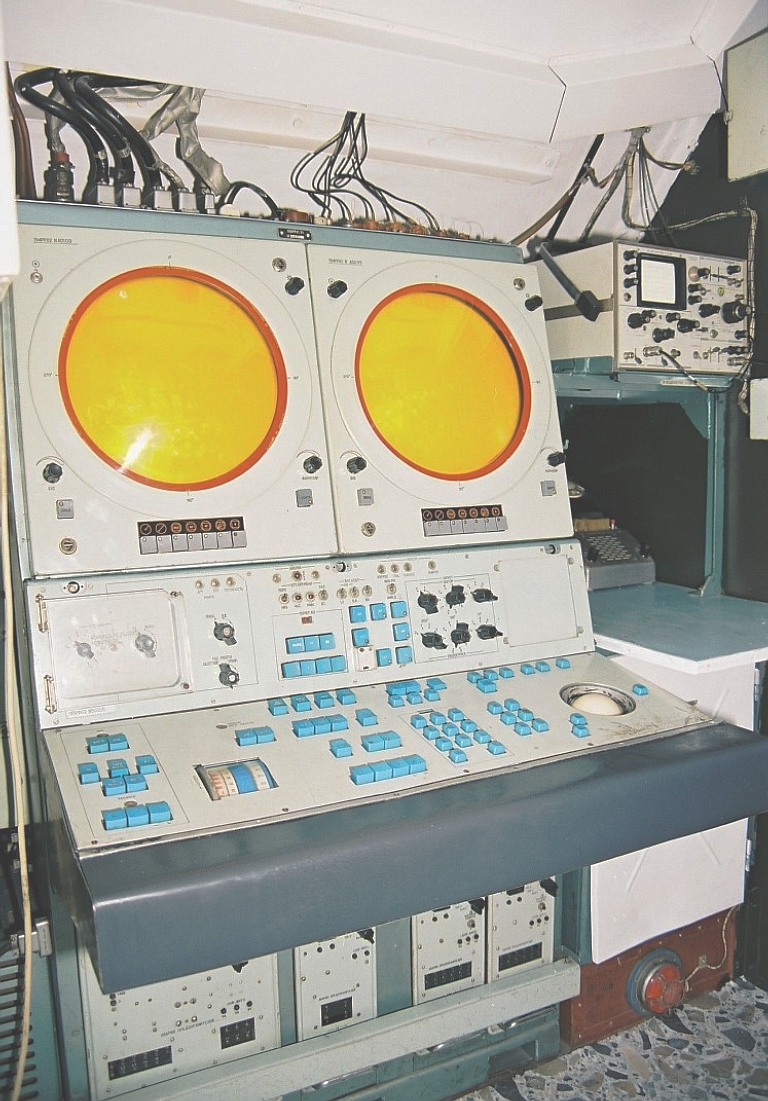
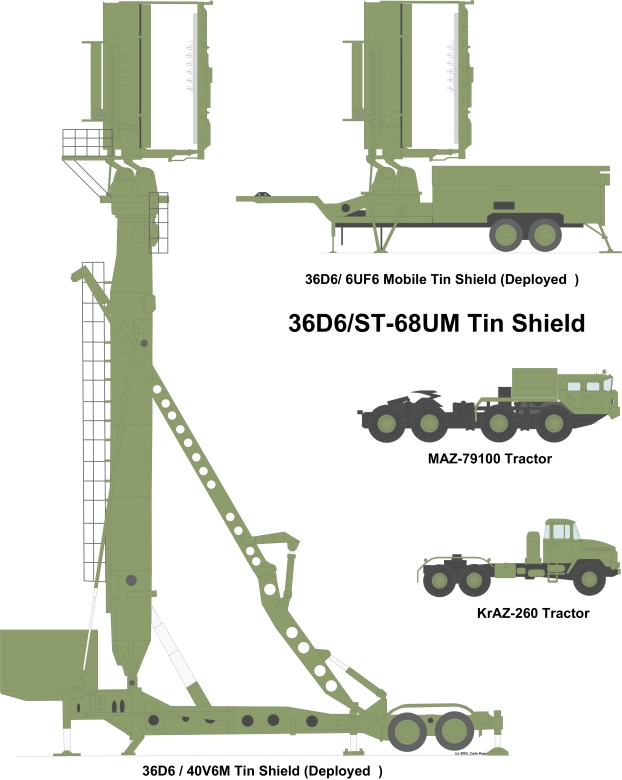
| ST-68U Principal Specifications [A] |
|
|---|---|
| Operating
Band |
S-Band |
| Pulse
Repetition
Interval (PRI) [msec] |
0.7
-
1.3 |
| Pulse
Repetition
Frequency (PRF) [Hz] |
750 - 1500 |
| Pulse
Duration
[usec] |
6
-
12 |
| Receive Interval [usec] | 800
|
| Peak
Power
[MegaWatt] |
up
to
2.5 (0.35 for ST-68UM) |
| Ave
Power
[kiloWatt] |
|
| Displayed
Range
[km] |
150.0 or 75.0 |
| Range
Resolution
[m] |
600.0 |
| Mainlobe
Width
[°] |
0.45 |
| Sweep
Rate
[RPM] |
6 / 12 |
| Deploy/Stow Time
[min] |
~60
(~120 with 40V6M) |
LEMZ 5N66/5N66M/76N6 Clam Shell
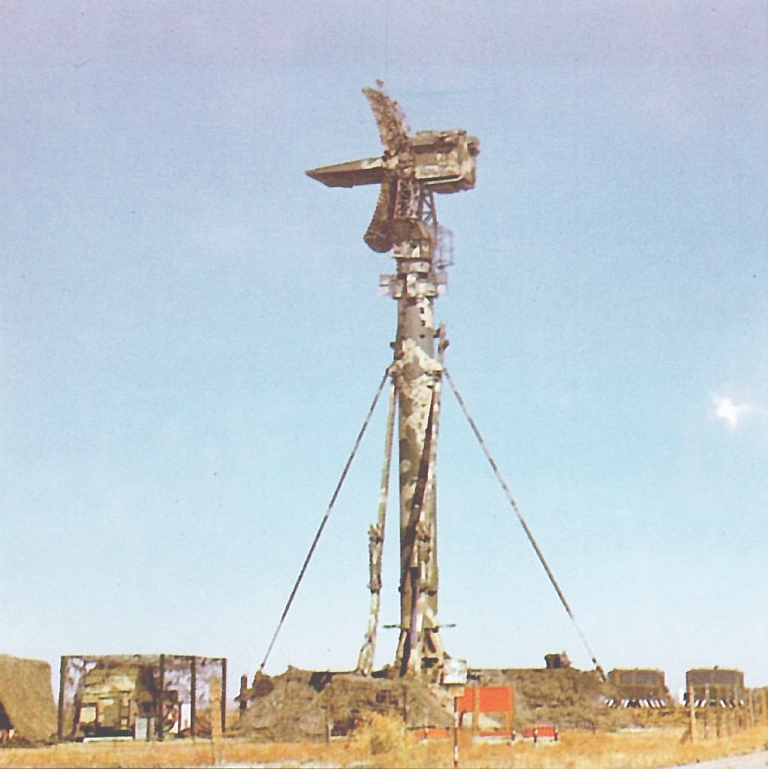
5N66M / 76N6 / 40V6M
The 5N66/5N66M/76N6 Clam Shell low level early warning and acquisition radar. It is an unconventional frequency modulated continuous wave design, using a split antenna arrangement with a large beak to prevent spillover from the transmitter. In configuration it is thus closest to the 5N62 Square Pair engagement radar used with the S-200/SA-5 Gammon SAM. Quoted performance figures include the detection of targets with an RCS as low as 0.02 square metres, at speeds of up to 1,400 kt, with a bearing resolution of 1 degree, velocity resolution of 9.3 kt and range resolution of 2.15 NM. Quoted RMS tracking errors are 0.3 degree in bearing, 4.7 kt in velocity and 1 NM in range. Chaff rejection performance is quoted at better than 100 dB, detection range is stated to be 50 NM for targets at 1,500 ft altitude, and 65 NM for 3,000 ft altitude. The transmitter delivers 1.4 kW of CW power at an unspecified carrier frequency, system MTBF is quoted at 100 hr with an MTTR of 0.5 hr.This family of radars is best known as the acquisition component for the S-300P/PM/PMU/PMU1 SA-10/20 Grumble/Gargoyle SAM system. It has been largely supplanted in newer S-300P/S-400 configurations by the LEMZ 96L6E.
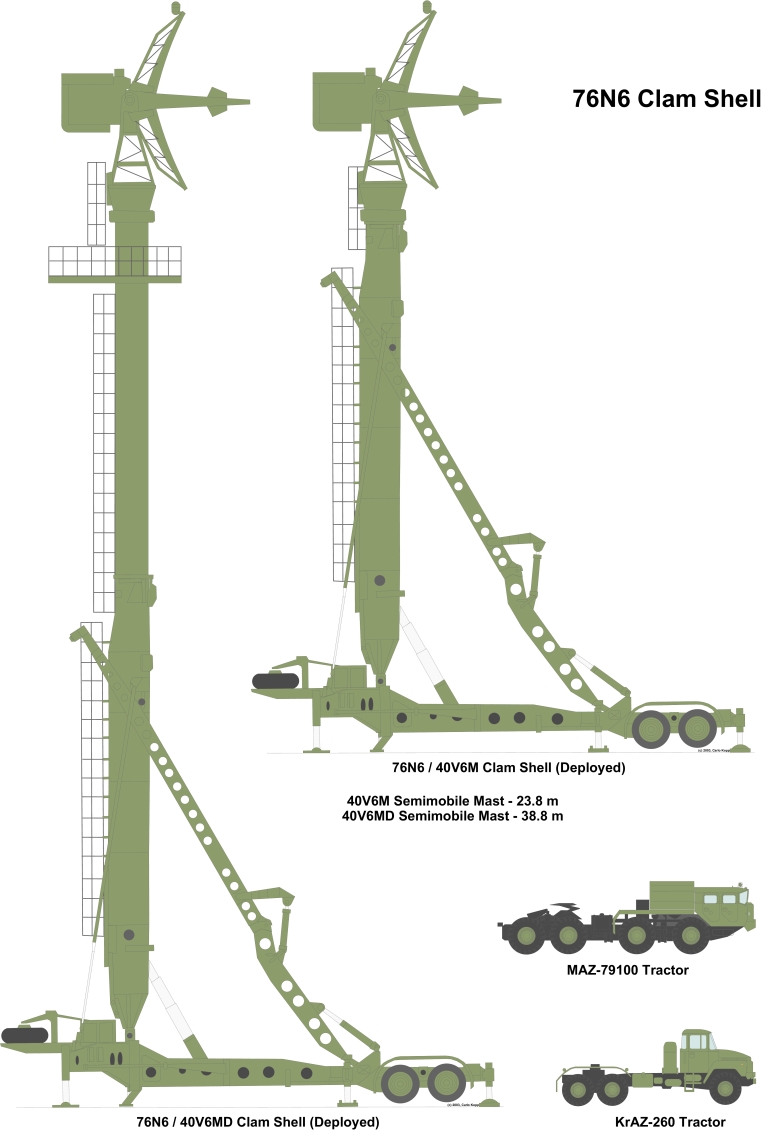
NIIIP 5N64S/64N6E/E1/E2 / 91N6E Big Bird
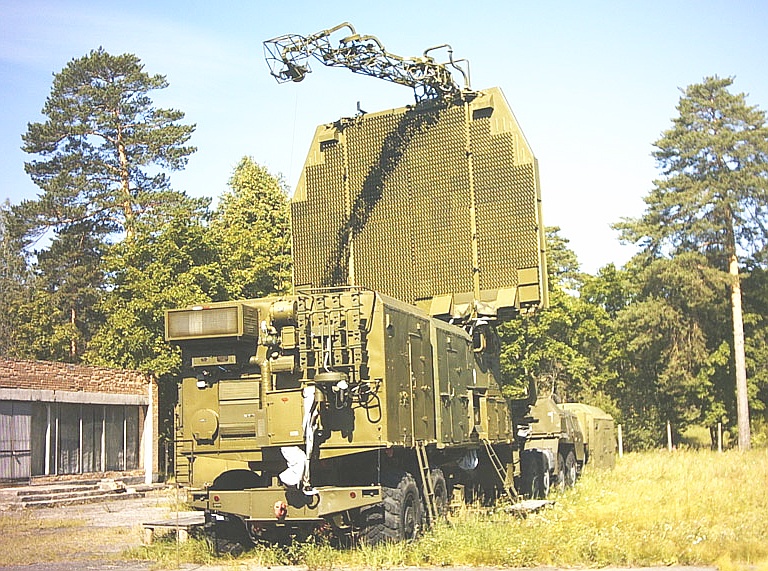
Early production 5N64S Big Bird A configuration - deployed.
The 64N6E Big Bird is the key to
much of the improved engagement capability, and ballistic missile
intercept capability in the later S-300P variants. This system operates
in the 2 GHz band and is a phased array with a 30% larger aperture than
the US Navy SPY-1 Aegis radar, even accounting for its slightly larger
wavelength it amounts to a mobile land based Aegis class package. It
has
no direct equivalent in the West.
Like other components of the
S-300PM system, the 64N6E has a number of unique and lateral design
features.
The radar antenna is mounted on a cabin, in turn mounted on a turntable
permitting 360 degree rotation. Unlike Western phased arrays in this
class, the 64N6 uses a reflective phased array with a front face horn
feed, the horn placed at the end of the long boom which protects the
waveguides to the transmitters and receivers in the cabin. The beam
steering electronics are embedded inside the antenna array, which has
around 2700 phase elements on either face. This Janus faced
arrangement permits the Big Bird to concurrently search two 90 degree
sectors, in opposite directions, using mechanical rotation to position
the antenna and electronic beam steering in azimuth and elevation. This
design technique permits incremental growth in output power as the only
components of the system which have to handle high microwave power
levels are the waveguide and feed horn.
The 64N6E is a frequency hopper,
and incorporates additional auxiliary antenna/receiver channels for
suppression of sidelobe jammers - NIIP claim the ability to measure
accurate bearing to jamming sources. The back end processing is Moving
Target Indicator (MTI), and like the Aegis the system software can
partition the instantaneous sector being covered into smaller zones for
specific searches. To enhance MTI performance the system can make use
of stored clutter returns from multiple preceding sweeps. Detection
ranges for small fighter targets are of the order of 140 to 150
nautical miles for early variants. Per 12 second sweep 200 targets can
be detected, and either six or twelve can be individually tracked for
engagements.
While the Big Bird provides an excellent acquisition capability against
aerial and ballistic missile targets, the 5V55 missile was inadequate.
The S-300PM/PMU1 introduced the 48N6 which has much better kinematics -
cited range against aerial targets is 81 nautical miles, ballistic
missile targets 21.5 nautical miles, with a minimum engagement range of
1.6 to 2.7 nautical miles. Low altitude engagement capabilities were
improved - down to 20 - 30 ft AGL. The missile speed peaks at 2,100
metres/sec or cca Mach 6. The missiles can be fired at 3 second
intervals, and Russian sources claim a single shot kill probability of
80% to 93% for aerial targets, 40% to 85% for cruise missiles and 50%
to 77% for TBMs.
The latest variant is the 91N6E
developed for the S-400 Triumf / SA-21 system. It is known to be a
fully digital design with a higher peak power rating than the 64N6E2 to
accommodate the longer ranging 48N6E3 and 40N6E missiles.
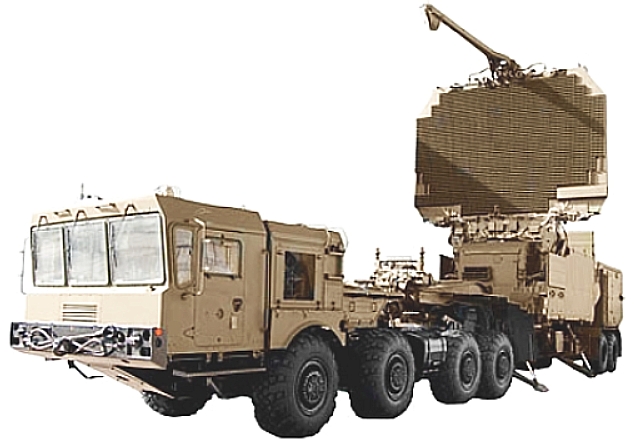
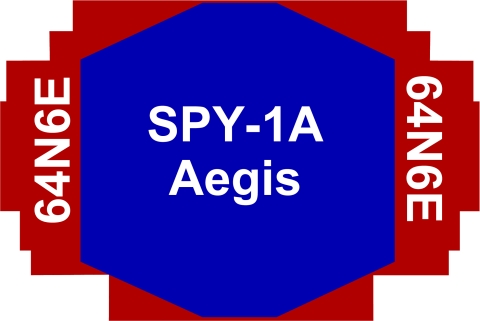
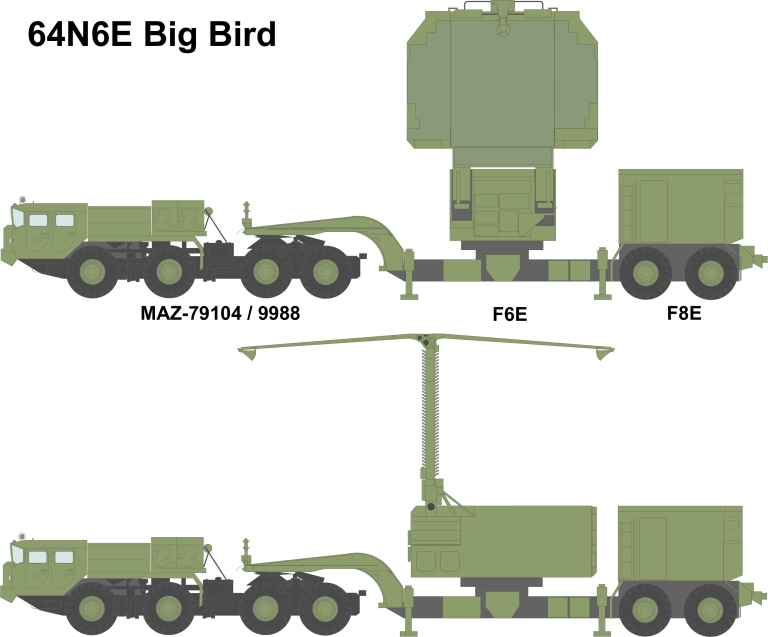
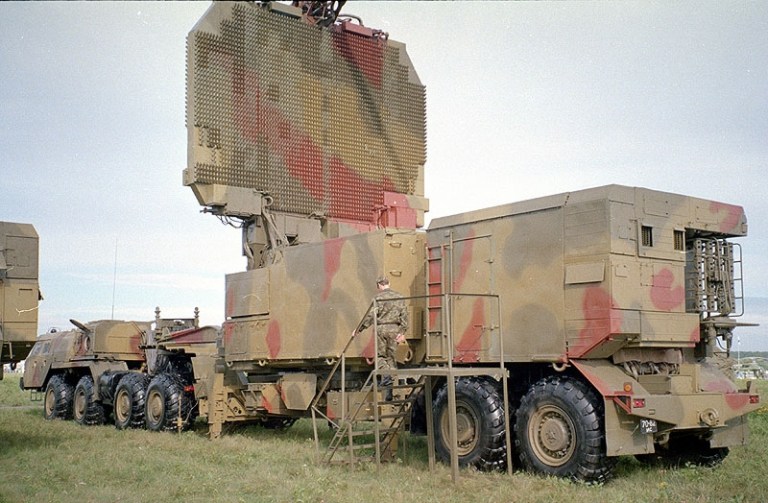
64N6E
deployed on display.
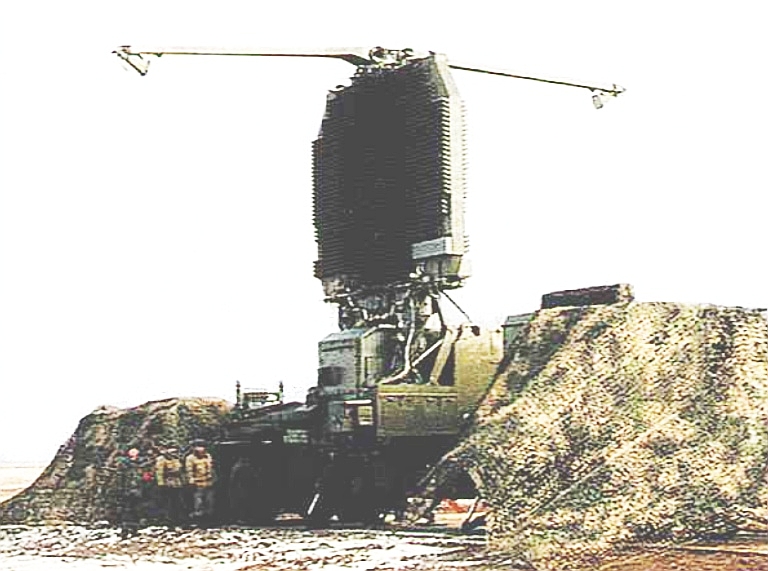
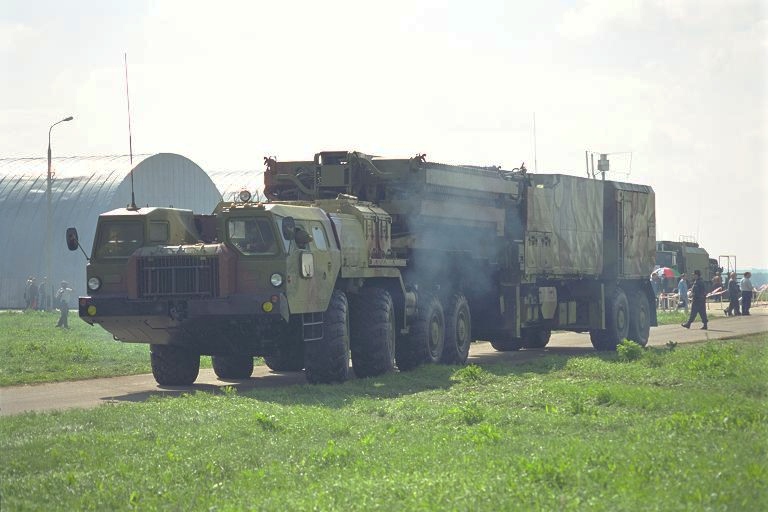
| Характеристики
(Russkaya
Sila) |
РЛО 64Н6Э |
| Зона обнаружения, град. - по азимуту - по углу места: - регулярный обзор - сопровождение - в специальном секторе |
360 13,4 55 до 75 |
| Дальность обнаружения аэродинамических целей типа МиГ-21, км | 260 |
| Точность определения координат - по дальности, м - по азимуту, мин - по углу места, мин |
200 30 35 |
| Период обзора, с - регулярный обзор - сопровождение целей |
12 6/12 |
| Количество целей, координаты которых выдаются потребителю за каждый обзор | 200 |
| Время готовности с марша и время свертывания, мин | 5 |
P-40/1S12 Bronya / Long Track
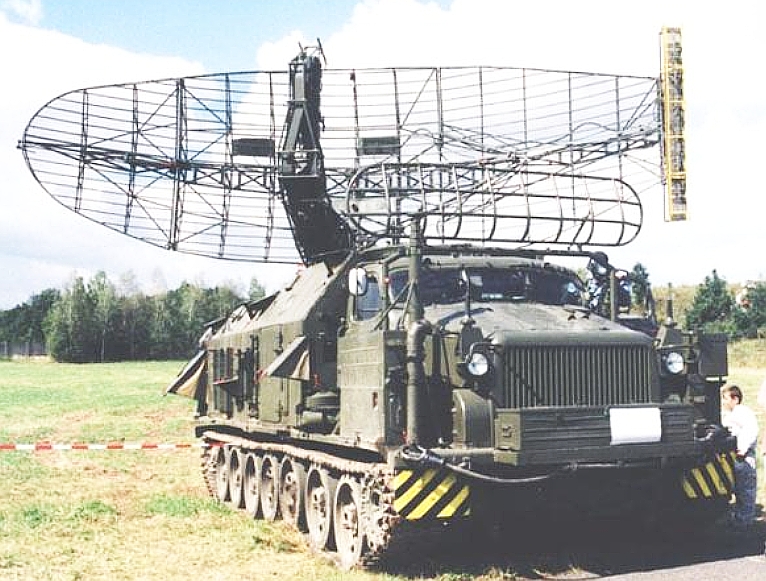
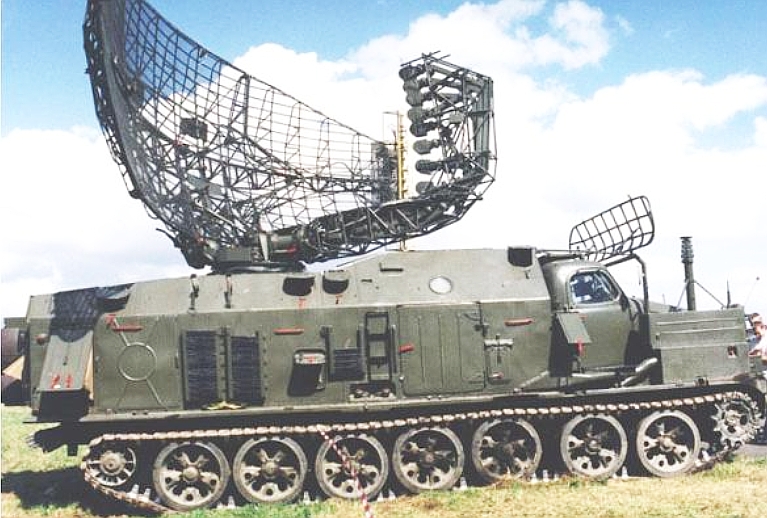
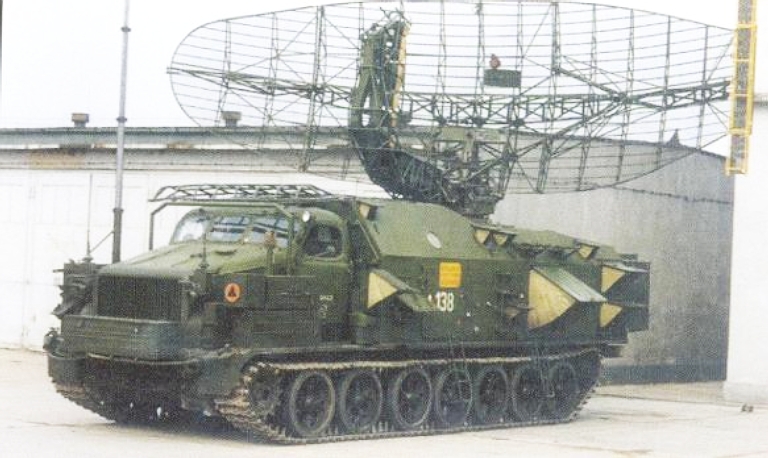
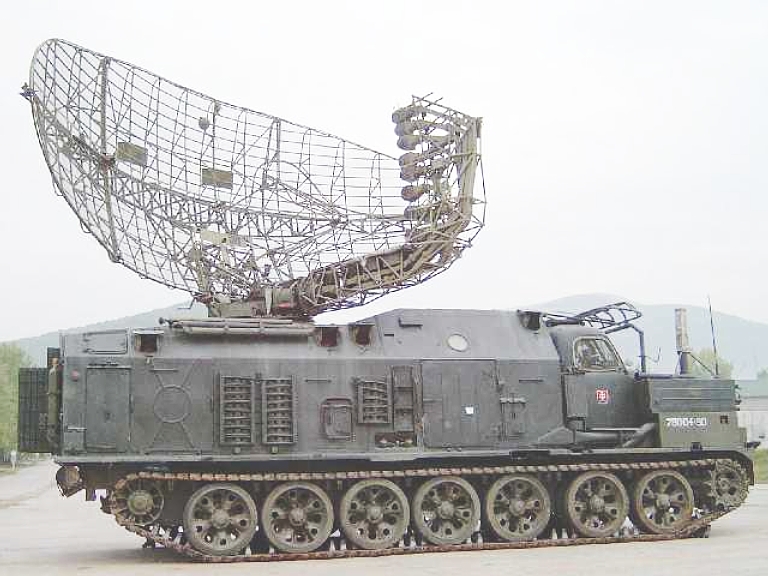
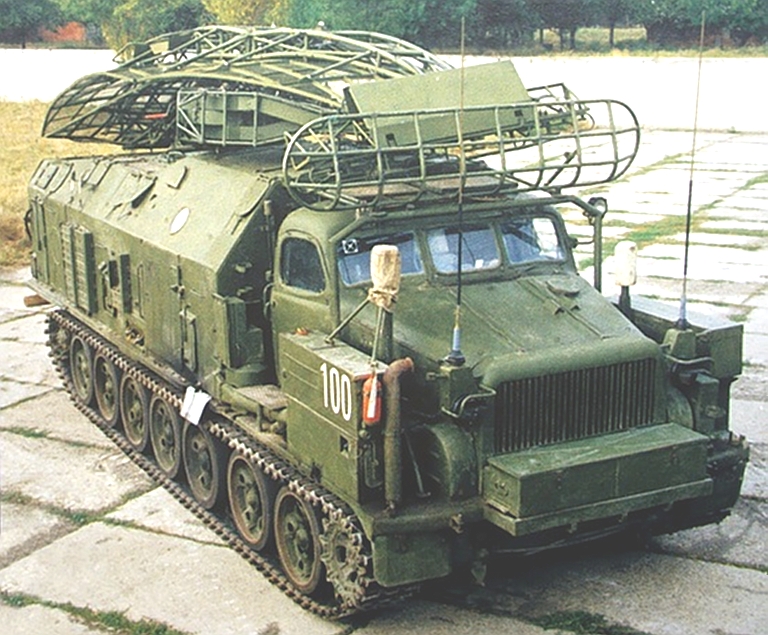
| 1S12 Principal Specifications [A] | |
|---|---|
| Operating
Band
[GHz] |
2.,2
-
2.3 |
| Pulse
Repetition
Interval (PRI) [msec] |
1.25
/
2.5 |
| Pulse
Repetition
Frequency (PRF) [Hz] |
400
/
800 |
| Pulse
Duration
[usec] |
~2.0 |
| Receive Interval [usec] | 1.24 / 2.49 |
| Peak
Power
[MegaWatt] |
~
2.0 |
| Ave
Power
[kiloWatt] |
2.0
-
3.0 |
| Displayed
Range
[km] |
400.0 |
| Range
Resolution
[m] |
~300.0 |
| Mainlobe
Width
[°] |
1.5 |
| Sweep
Rate
[RPM] |
4
-
5 |
9S15/9S15MV2 Obzor 3 / Bill
Board A/B
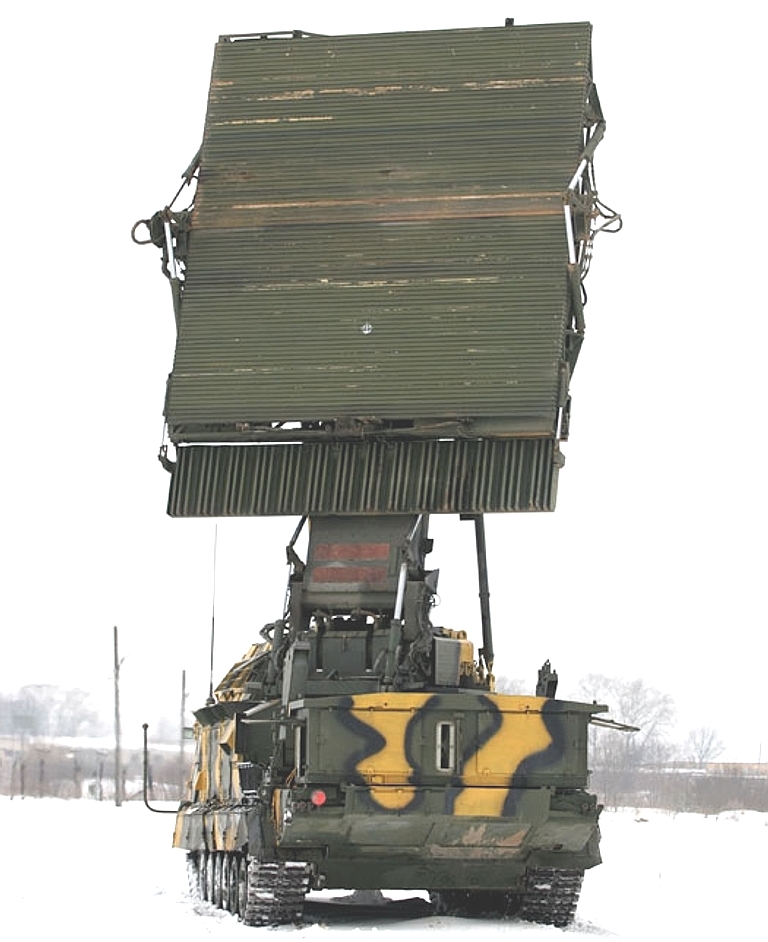
There are a number of configurations, associated with specific block upgrades to the S-300V / SA-12 series system, including a variant specific to the S-300VM / SA-23 system, the 9S15MV/MVZ
The 9S15 has two basic modes of
operation. The first is optimised for a 12 second sweep and is claimed
to provide a 50% probability of detecting a fighter sized target at 130
nautical miles.
The second mode employs a faster
6 second sweep period,
and is used to detect inbound TBMs and aircraft, with a reduced
detection range of about 80 nautical miles for fighters, and 50 to 60
nautical miles for TBMs like the Scud A or Lance.
Cited range against aerial targets for the improved Bill Board B is in excess of 170 nautical miles for fighters.
Russian sources are
unusually detailed on ECCM techniques used, claiming the use of three
auxiliary receiver channels for cancelling sidelobe jamming, automatic
wind compensated rejection of chaff returns, and provisions in the MTI
circuits to reject jamming. A facility for precise angular measurement
of jamming emitters is included. RMS tracking errors are quoted at 250
metres in range and about 0.5 degrees in azimuth/elevation, with the
ability to track up to 200 targets.
Cited RF performance for the
baseline 9S15M is an average power of 8 kiloWatts produced by a TWT,
and receiver sensitivity of 10-13 Watts.
The system has an integral gas turbine electrical power generator for autonomous operation - a feature of most S-300V components.
This radar provides a highly
mobile 3D search and acquisition capability, but is limited in low
level
coverage footprint by its antenna elevation. Its limited scan rate
makes it unusable for high performance IRBM acquisition and tracking,
which is the primary role of the 9S19 High Screen radar.
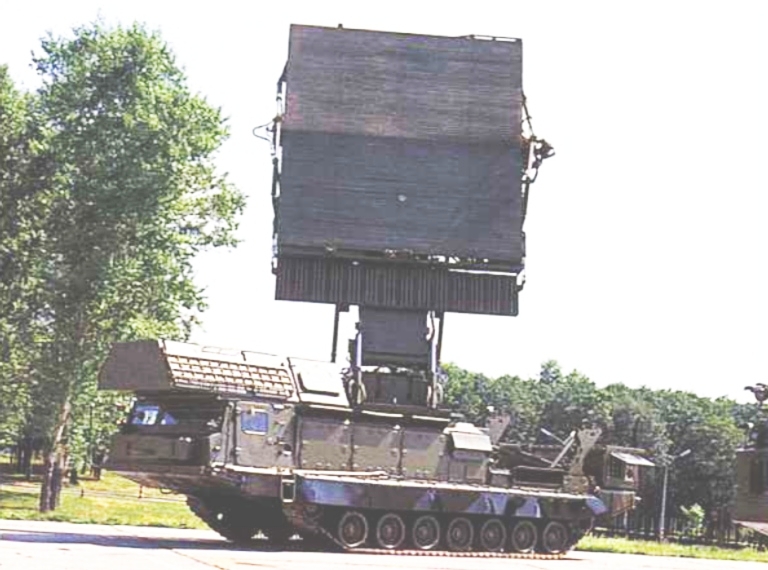
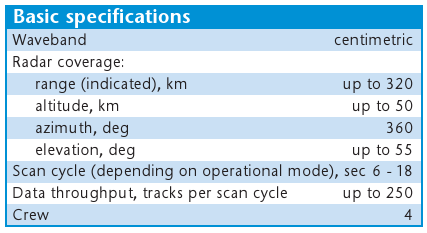
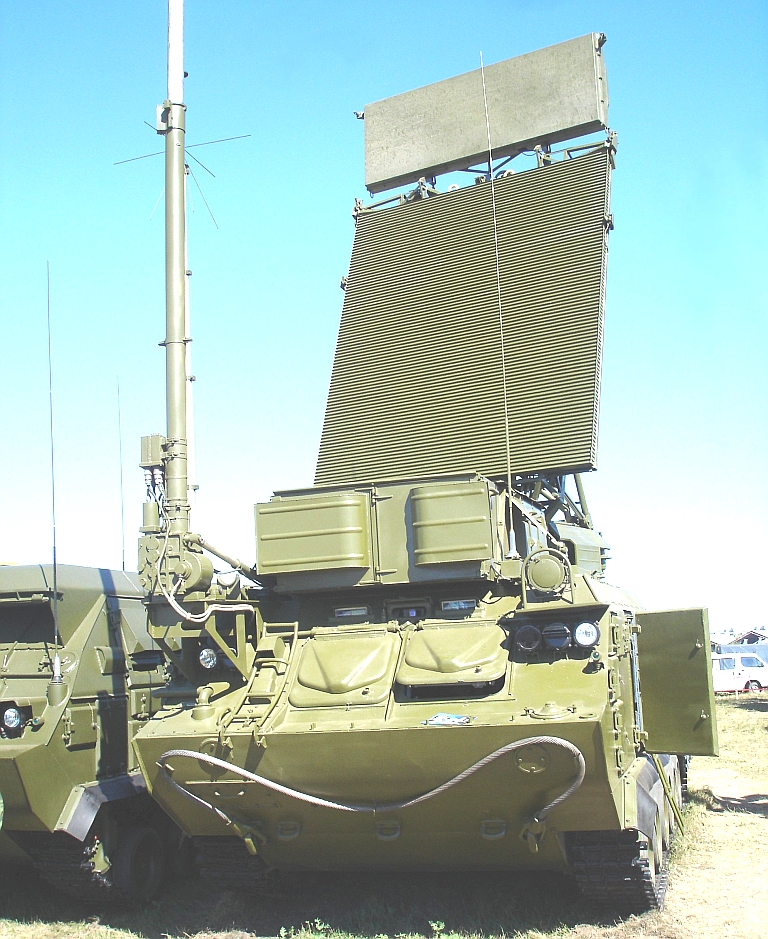

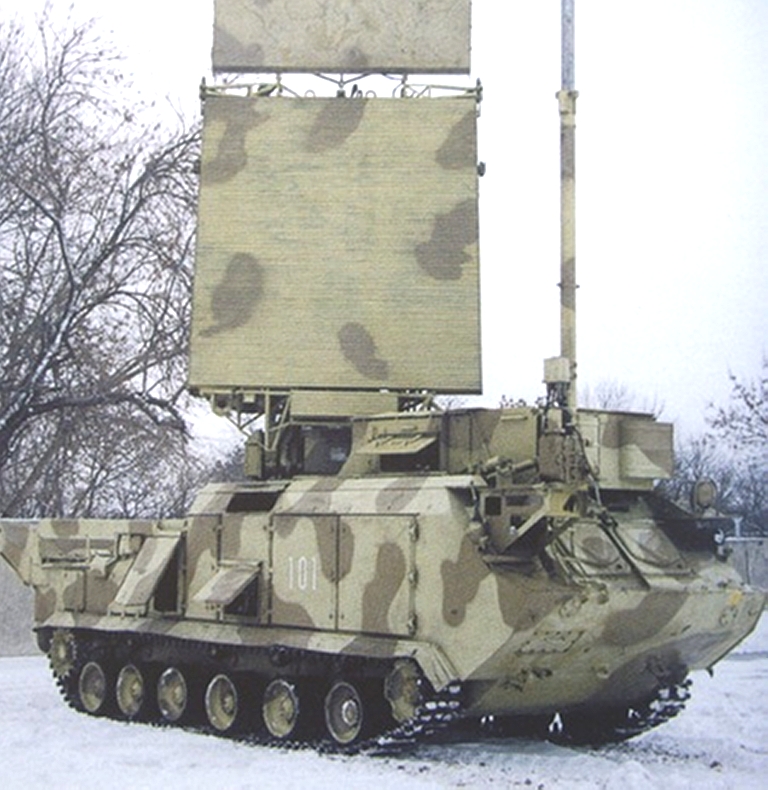
9S18M1 Snow Drift.
Specifications (Rosoboronexport)
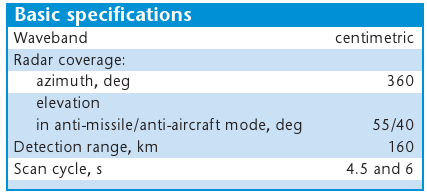
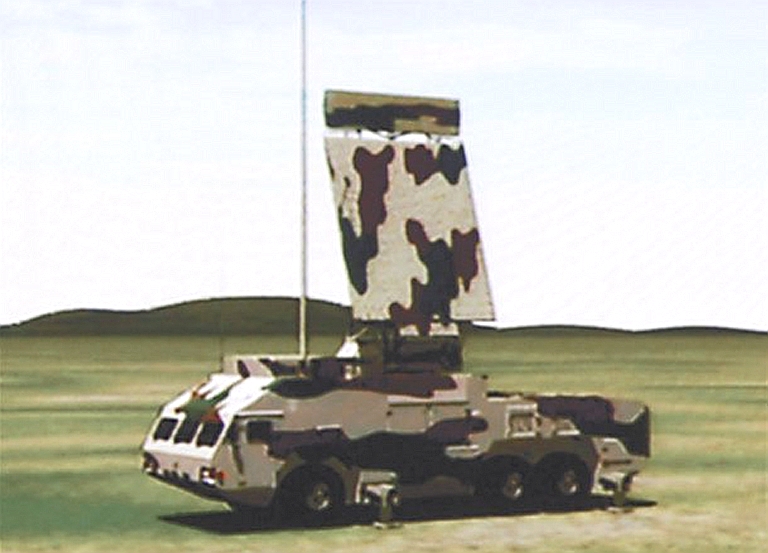
9S19/9S19M/M2 Imbir / High
Screen A/B
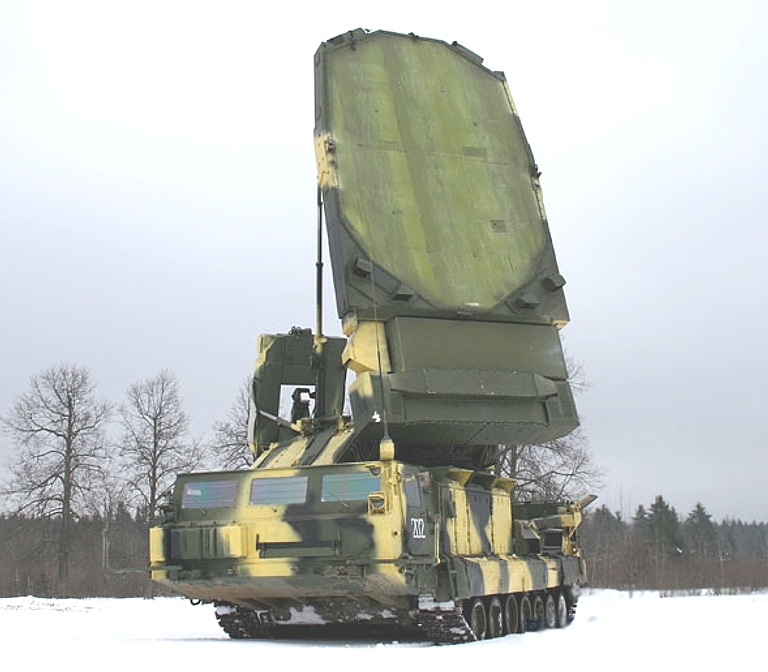
9S19 Imbir / High Screen A deployed (Image © 2009, Sergey Kuznetsov).
The specialised 9S19 Imbir is a
high power-aperture, coherent, X-band phased array designed for the
rapid acquisition and initial tracking of inbound ballistic missiles
within a 90 degree sector. To that effect it uses a large passive phase
technology transmissive array, using a conceptually similar space
feed technique to the MPQ-53 and 30N6 series radars, producing a narrow
0.5º pencil beam mainlobe. The primary search waveform is chirped
to provide a very high pulse compression ratio intended to provide very
high range resolution of small targets.
The design uses a 16 kiloWatt ave Travelling Wave Tube (TWT) source, very low sidelobes and frequency hopping techniques to provide good resistance to jamming.
Three primary operating modes are
used. In the first the 9S19 scans a 90º sector in azimuth,
between
26º and 75º in elevation, to detect inbound Pershing class IRBMs
within a 40 to 95 nautical mile range box, feeding position and
kinematic data for up to 16 targets to the 9S457 command post. In this
mode the transmissive array is tilted back to 35º.
The
second mode is intended to detect and track supersonic missiles such as
the AGM-69 SRAM, and sweeps a narrower 60º sector in azimuth,
between 9º and 50º in elevation, within a range box between 10
and
90 nautical miles, generating target position and velocity updates at 2
second intervals.
The third mode is intended to acquire aircraft in severe jamming environments, with similar angular and range parameters to the second mode. In this mode the transmissive array is tilted back to 15º.
The radar is claimed to produce
RMS angular errors
of around 12 to 15 minutes of arc, and a range error of a mere 70
metres (at max range 0.04%!). The peak power rating remains
undisclosed. Cited range performance for the 9S18M2 High Screen B is
250 km, versus 175 km for the earlier High Screen A.
In function the 9S19 most closely
resembles much newer Western X-band ABM radars, but is implemented
using
seventies generation antenna and transmitter technology, and is fully
mobile unlike the semimobile US THAAD X-band radar, and Israeli Green
Pine.
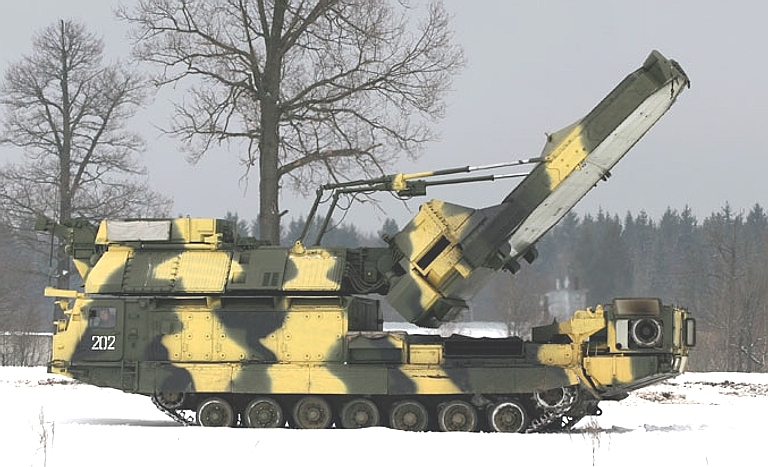
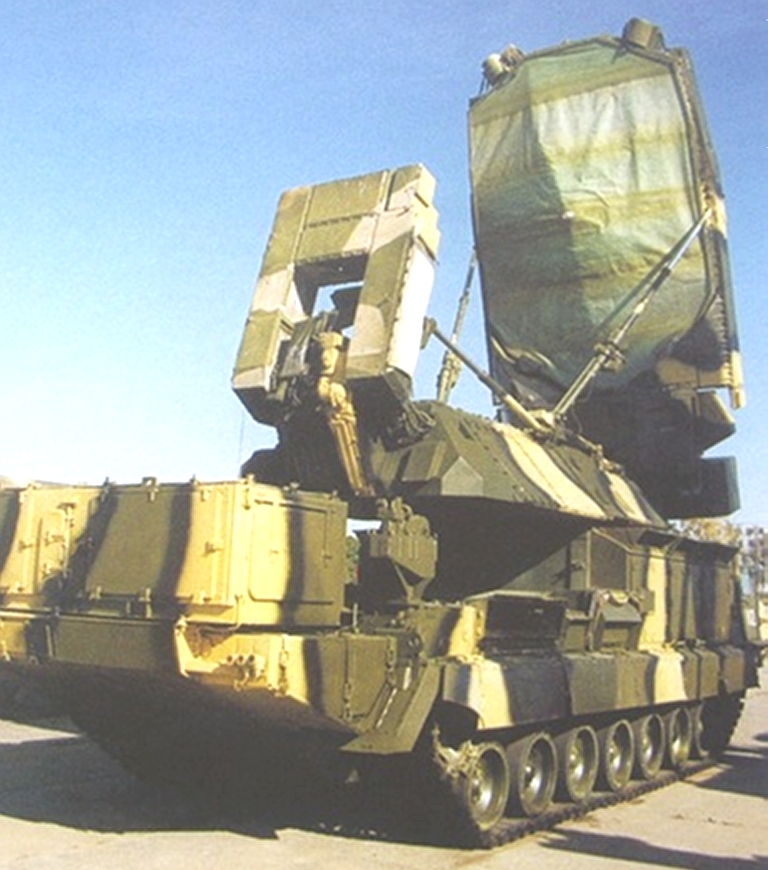
9S19 Imbir
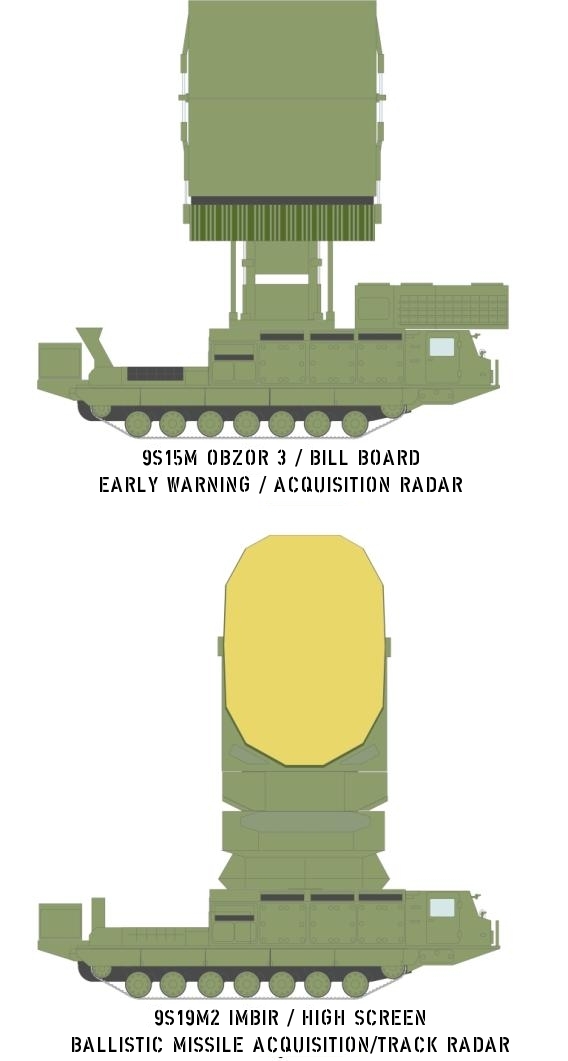
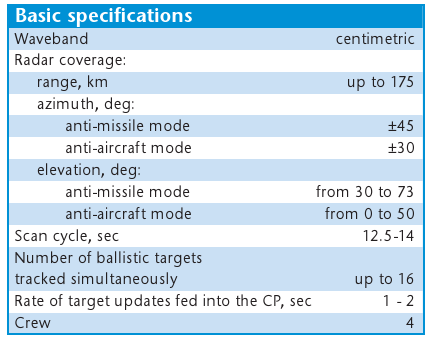
64L6E Gamma-S1E

Provision is made for a four-operator remote control facility to control the radar from a distance of up to 1 km via a fibre-optic line or from 15km-distance - via a radiolink.
The Gamma-S1E is an all-weather radar operating in various climates at temperatures between -50°C and +50°C, in relative humidity totalling 98%, wind speed equalling up to 25 m/s and above-sea altitude amounting to 2,000 m. The radar is fitted with an automated testing/monitoring equipment, air conditioning, automatic fire-alarm and fire-extinguishing systems, other technical support assets.
(Roboronexport catalogue cited).
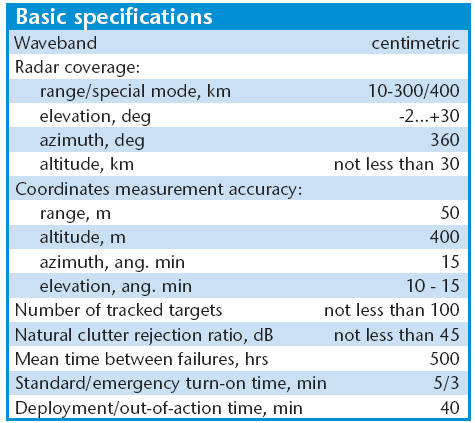
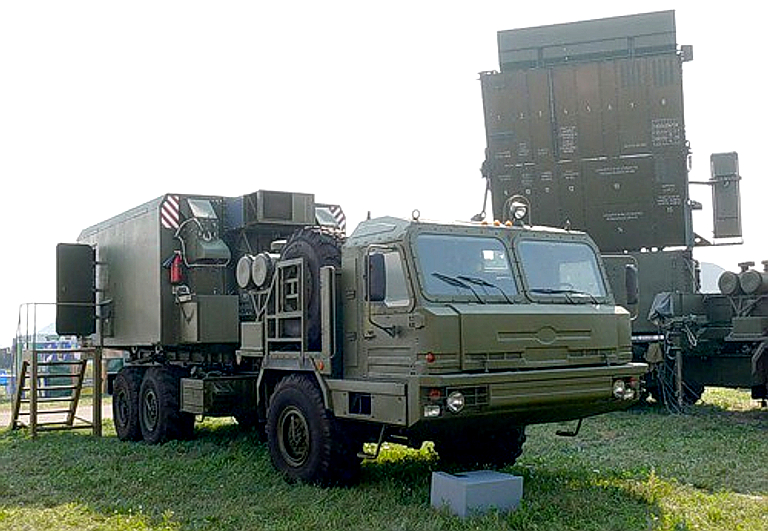
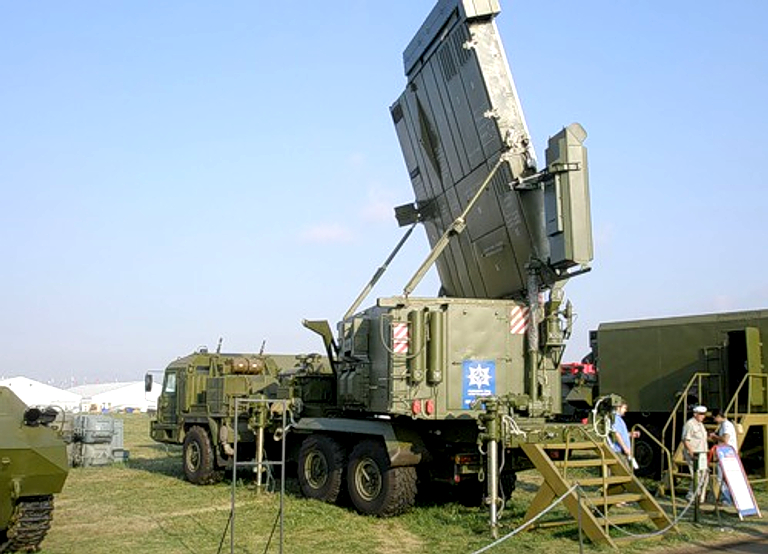
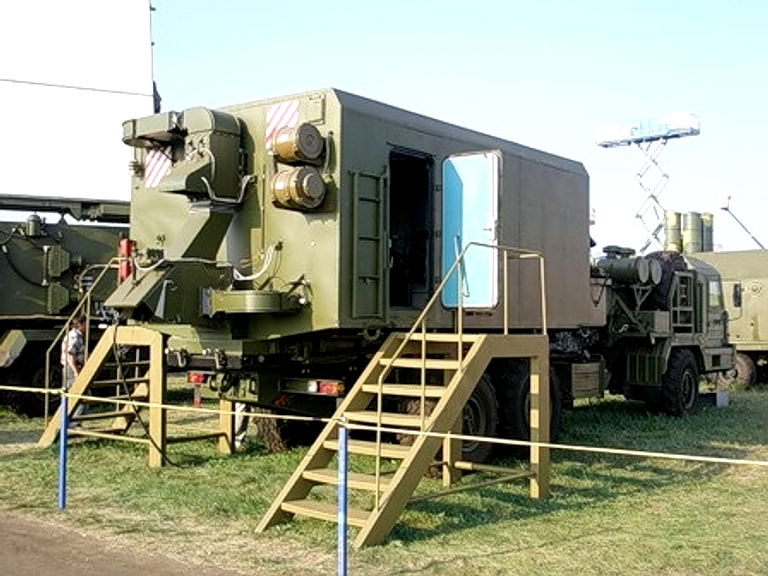
Imagery Sources: Russian Internet, Chinese Internet, Almaz-Antey, LEMZ, VNIIRT, Author
Line Artwork: © 2000, 2007, 2008, 2009 Carlo Kopp
Technical Report APA-TR-2009-0101
|
|||||||||||||
![Sukhoi PAK-FA and Flanker Index Page [Click for more ...]](APA/flanker.png) |
![F-35 Joint Strike Fighter Index Page [Click for more ...]](APA/jsf.png) |
![Weapons Technology Index Page [Click for more ...]](APA/weps.png) |
![News and Media Related Material Index Page [Click for more ...]](APA/media.png) |
||||||||||
![Surface to Air Missile Systems / Integrated Air Defence Systems Index Page [Click for more ...]](APA/sams-iads.png) |
![Ballistic Missiles and Missile Defence Page [Click for more ...]](APA/msls-bmd.png) |
![Air Power and National Military Strategy Index Page [Click for more ...]](APA/strategy.png) |
![Military Aviation Historical Topics Index Page [Click for more ...]](APA/history.png)
|
![Information Warfare / Operations and Electronic Warfare Index Page [Click for more ...]](APA/iw.png) |
![Systems and Basic Technology Index Page [Click for more ...]](APA/technology.png) |
![Related Links Index Page [Click for more ...]](APA/links.png) |
|||||||
![Homepage of Australia's First Online Journal Covering Air Power Issues (ISSN 1832-2433) [Click for more ...]](APA/apa-analyses.png) |
|||||||||||||
| Artwork, graphic design, layout and text © 2004 - 2014 Carlo Kopp; Text © 2004 - 2014 Peter Goon; All rights reserved. Recommended browsers. Contact webmaster. Site navigation hints. Current hot topics. | |||||||||||||
|
Site Update
Status:
$Revision: 1.753 $
Site History: Notices
and
Updates / NLA Pandora Archive
|
|||||||||||||
|
|
Tweet | Follow @APA_Updates | |||||||||||
|
|
|||||||||||||
|
|
|||||||||||||
![F-111 Aardvark Index Page [Click for more ...]](APA/f-111.png)
![F/A-18 Hornet and Super Hornet Index Page [Click for more ...]](APA/fa-18a.png)
![Aerial Refuelling and Airlift Capabilities Index Page [Click for more ...]](APA/aar-lift.png)
![Directed Energy Weapons and Electromagnetic Bombs Index Page [Click for more ...]](APA/dew.png)
![Notices and Updates Index Page [Click for more ...]](APA/notices-128.png)
![APA NOTAM and Media Release Index Page [Click for more ...]](APA/notams-128.png)
![APA Research Activities and Policy / Technical Reports Index [Click for more ...]](APA/research-128.png)
![Search Air Power Australia Website [Click for more ...]](APA/search-128.png)
![Briefings and Submissions - Air Power Australia [Click for more ...]](APA/briefs-128.png)
![Air Power Australia Contacts [Click for more ...]](APA/contacts-128.png)
![Funding Air Power Australia [Click for more ...]](APA/funding-258.png)
